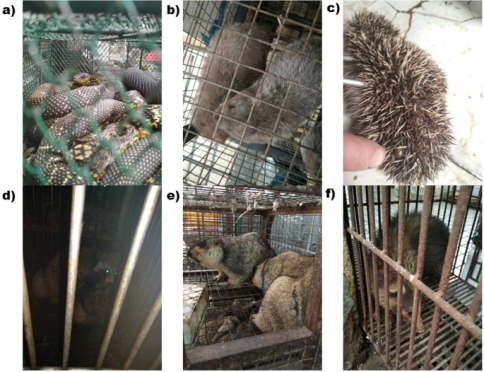Research documents extent of wildlife trade in Wuhan’s markets

By Raymond Zhong
WASHINGTON – In the two years before the pandemic began, markets in the Chinese city of Wuhan were selling nearly three dozen animal species that can harbour pathogens that jump to humans, researchers have found, shedding new light on the possible role of the wildlife trade in the coronavirus’ origins.
The researchers found sales in Wuhan of mink, palm civets and raccoon dogs, but they did not find sales of pangolins or bats, which have been suspected as possible sources of the coronavirus.
In all, the researchers documented sales of more than 47,000 animals across 38 species in Wuhan markets between May 2017 and November 2019. Thirty-three of the species have previously been infected with diseases or disease-bearing parasites that can affect humans, the researchers said.
China suspended the sale and consumption of wild animals as the coronavirus began spreading rapidly early last year. The country’s wildlife trade played a key role in the SARS outbreak in the early 2000s.
A team of experts who led a World Health Organization (WHO) mission to Wuhan this year examined vendor records and other evidence from the city’s animal markets. But the team reached no firm conclusions about the markets’ role in the outbreak, or about the specific species through which the coronavirus might have spread to humans.
More than a year into the pandemic, the question of the virus’ origins remains largely unresolved. The Biden administration last month announced a new push to investigate whether it could have accidentally leaked from a laboratory in Wuhan.
President Joe Biden’s action came as top health officials renewed their appeals this week for a more rigorous inquiry. And it followed mounting criticism of a report from a team of international experts convened by the WHO that largely dismissed the possibility that the virus had accidentally escaped from a Chinese laboratory called the Wuhan Institute of Virology.
Many scientists support investigating all possibilities, including the laboratory origin, even though they think the virus was probably transmitted from animals to humans outside of a laboratory. Angela Rasmussen, a virologist at the University of Saskatchewan’s Vaccine and Infectious Disease Organization, said of the new study, “I think this puts a big point in the column of natural origin through intermediate species.” She said that while the paper “doesn’t prove anything” it “provides clear evidence that the wildlife markets really haven’t been investigated enough.”
The study of the animal markets, published this week in the journal Scientific Reports, was written by authors affiliated with China West Normal University, Oxford University and the University of British Columbia.
Between 2017 and 2019, one of the researchers conducted monthly surveys of all 17 shops in Wuhan markets that sold live wild animals for food and pets. Seven of these shops were at the city’s Huanan seafood market. Several early COVID cases in Wuhan were discovered in people with connections to that market.
The researchers originally carried out the surveys to investigate a tick-borne virus. But their results became “serendipitously” relevant to the COVID-19 pandemic, the researchers wrote.
Among the other species on sale in Wuhan, according to the researchers, were badgers, hedgehogs, weasels, porcupines, marmots, red foxes, flying squirrels, crested myna birds, snakes, vipers, cobras and Siamese crocodiles. Almost all of the animals were “sold alive, caged, stacked and in poor condition,” the researchers wrote, and were often butchered on site.
-New York Times

